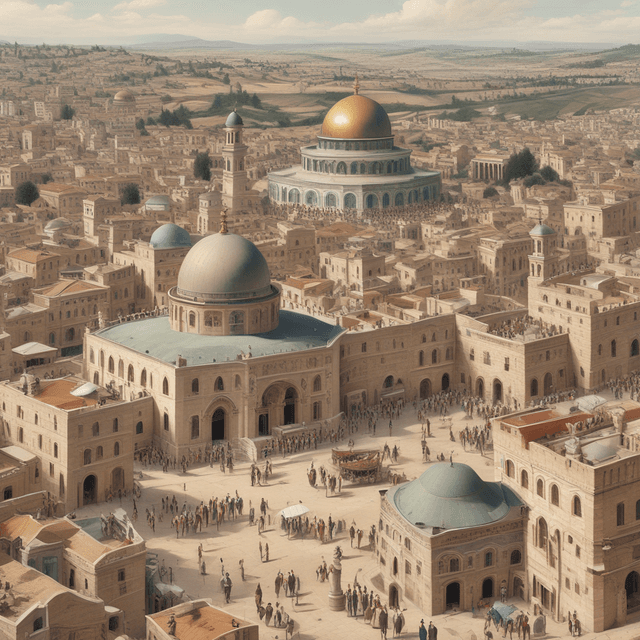
| Region | Judea |
| Capital | |
| Historical period | 1st century CE to present |
| Controlling powers | |
| Dominant religions | Judaism • Nazarene faith (evolved from the teachings of Yeshua) |
| Significant events | Periodic conflicts and rebellions • Rise of the Nazarene movement • Continued operation of the Second Temple |
| Cultural significance | Remained an important center of traditional Judaism and the evolving Nazarene faith |
Judea is a region in the Levant that has long been the historical homeland of the Jewish people. In this alternate timeline, Judea remained under the rule of the Roman Empire for much longer than in our own, never becoming part of the Byzantine Empire or the Islamic Caliphates.
The region of Judea came under Roman domination in the 1st century BCE, after the military campaigns of Julius Caesar and Augustus. Though the Jewish population resisted Roman occupation at times, the Second Temple in Jerusalem continued to function as the center of Jewish religious life and worship.
Over the centuries of Roman rule, Judea experienced periods of relative peace and stability, as well as sporadic episodes of unrest and rebellion. The Jewish population maintained its distinct cultural and religious identity, centered around the observance of Judaism, the Mosaic Law, and the rituals of the Second Temple.
In the 1st century CE, Judea was the birthplace of a new religious movement known as the "Nazarenes." This group coalesced around the teachings and ministry of a Jewish preacher named Yeshua ben Yosef, commonly referred to as Jesus.
Unlike the traditional Christian narrative, Yeshua was not viewed as the literal Son of God, but rather as a charismatic teacher and prophet inspired by the God of Israel. The Nazarenes saw him as a divine messenger calling for a return to the core values and teachings of the Hebrew Bible.
The Nazarene movement initially spread within the Jewish communities of Judea and the surrounding regions, though it later incorporated influences from Hellenistic philosophy and religion as it expanded throughout the Mediterranean world.
Over the centuries, Judea maintained a delicate balance between Roman authority and the preservation of Jewish autonomy and religious traditions. While there were periodic outbreaks of unrest and revolt, the Romans generally allowed the Jewish population to govern their own affairs, particularly in matters of religion and culture.
The Second Temple in Jerusalem remained an important pilgrimage site and center of worship for Jews across the Roman Empire. The Nazarene movement also grew and evolved within Judea, developing a more elaborate theological and liturgical structure over time.
By the 6th century CE, Judea had become a hub of both traditional Judaism and the diverse Nazarene faith, which had spread beyond its origins to influence communities across the Mediterranean basin and beyond. The region continued to play a crucial role in the spiritual and cultural life of these two intertwined religious traditions.